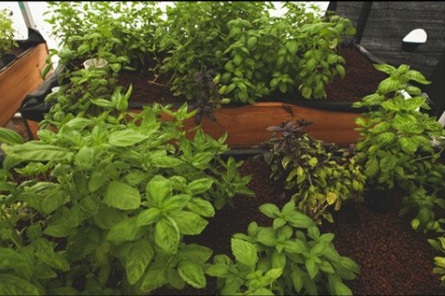Aquaponics: Drought and the Future of Food
This is Passport to Texas
Aquaponics is a method by which waste created by fish fertilizes crops through a recirculating filtration system. Using substantially less water than conventional agriculture, aquaponics may be the future of small-scale commercial farming.
15— With the recent droughts, Texas growers are hoping they’ll have more opportunities with aquaponics to engage in commercial growing and to produce lettuce and vegetables for restaurants as well as for selling to farmers markets.
Monica McGarrity is an aquatic invasive species biologist with Parks and Wildlife. Regulations, fees, and permits for an aquaponics system may apply; in some cases, producers raising tilapia may require a permit.
30—The key distinction is going to be whether they’re engaging in personal aquaponics or commercial aquaponics. If they’re not selling the fish, and the fish are Mozambique tilapia – this one species of tilapia – then a permit is not required. There are some stipulations, and that includes: the fish must be obtained from an exotic species permit holder; you also have to keep what’s called the exotic species transport invoice for as long as you have the fish; lastly – no fish can leave the property alive.
They must have guts or head removed before leaving the premises. We have links to more information as well as permit applications and transportation invoices at passporttotexas.org.
The Wildlife and Sport Fish Restoration program supports our series and funds diverse conservation projects in Texas.
For Texas Parks and Wildlife, I’m Cecilia Nasti.



 Passport to Texas is a
Passport to Texas is a  Passport to Texas is made available by:
Passport to Texas is made available by: